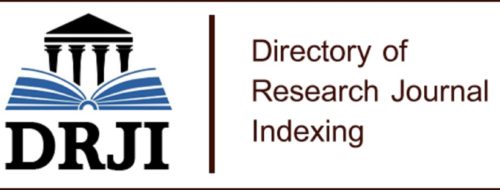Öz
The impact of monetary policies on inflation has always been one of the goals of monetary policymakers. To what extent a monetary shock can be effective on inflation, or that both positive and negative monetary shocks can be effective in aggravating or controlling inflation are among the important issues in monetary economics, which scientific research is aimed at It is very necessary to answer them. Therefore, in this research, the impact of positive and negative shocks on the inflation rate in selected West Asian countries has been investigated. In this research, panel data has been used in the period of 2000-2020 for the countries of the West Asian region, including Iran, Armenia, Jordan, Azerbaijan, Pakistan, Oman, Saudi Arabia, Kyrgyzstan, Kazakhstan, Qatar, Kuwait and Georgia. GLS method is used to estimate the model. The results showed that the impact of monetary shocks on the general level of prices are different from each other in the countries of the West Asian region, both in terms of the level of significance and in terms of the level of influence. In the countries of Iran, Pakistan, Kyrgyzstan, Kuwait and Georgia, monetary shocks had a symmetrical effect on the general level of prices, and in the countries of Jordan, Azerbaijan and Qatar, the effect of monetary shocks was asymmetric. Of course, in the countries of Saudi Arabia, Oman and Kazakhstan, only negative shocks have an effect on the general level of prices, as a result, the impact of monetary shocks on the general level of prices is asymmetric in these countries as well. Also, the results showed that in all the studied countries, the impact of negative shocks on prices is greater than positive shocks.
Anahtar Kelimeler
monetary shocks West Asia inflation general level of prices monetary policies
Kaynakça
- ANDREAS, Freytag. And Schnabl , GUNTHER; (2017), “Monetary Policy Crisis Management as a Threat to Economic Order.” Applied Economics Quarterly, 50 (2), 151–169.
- BAKARE , Aremu, A,O, OSOBASE; (2015), “Effect of Fiscal and Monetary Policies on Industrial Sector Performance- Evidence from Nigeria. ” Journal of Economics and Sustainable Development, 6(17), 67-82.
- BALTAGI, Badi H; (2008), “Forecasting with panel data. ” Journal of Forecasting, 27(12), 153-173.
- BHATTACHARYA, Rina; (2014), “Inflation dynamics and monetary policy transmission in Vietnam and emerging Asia.” Journal of Asian Economics, 34, 16-26. https://doi.org/10.1016/j.asieco.2014.05.001
- CAMBAZOGLU, Birgül & Hacer Simay, KARAALP; (2012), “The effect of monetary policy shock on employment and output: The case of Turkey.” Economics, Manangment and Financial Markets, 7(4), 311-319.
- CONTI, Antonio M., NERI, Stefano and Andrea, NOBILI; (2017), “Low Inflation and Monetary Policy in the Euro Area.” ECB Working Paper No. 2005. http://dx.doi.org/10.2139/ssrn.2910938
- DIEGEL, Max and Dieter, NAUTZ; (2021), “Long-term inflation expectations and the transmission of monetary policy shocks: Evidence from a SVAR analysis.” Journal of Economic Dynamics and Control, 130, 1-33. https://doi.org/10.1016/j.jedc.2021.104192
- DULLIEN, Sebastian, and Tober, SILKE; (2019), “Stärken und Schwächen der Modern Monetary Theory.” Applied Economics Quarterly, 88 (4), 91–102.
- FÈVE, Patrick, MATHERON, Julien and Guillaume, SAHUC; (2010), “Inflation Target Shocks and Monetary Policy Inertia in the Euro Area,” The Economic Journal,120(547),1100–1124. https://doi.org/10.1111/j.1468-0297.2009.02332.x
- HOSSAIN, Monzur and Wahid F. IBON; (2020), “Assessing the Effectiveness of Monetary Policy in Bangladesh.” Bangladesh's Macroeconomic Policy. Palgrave Macmillan, Singapore. https://doi.org/10.1007/978-981-15-1244-5_5
- KAMAAN, Corazon; (2014), “The effect of monetary policy on economic growth in Kenya.” International Journal of Business and Commerce, 3(8), 11-24.
- KHOZEIMEH, Amir Mohsen, AMINIFARD, Abbas, ZARE, Hashem, and Mehrzad EBRAHIMI; (2018), “The Monetary Policy Transmission Mechanism in the Framework of the Term Structure of Interest Rate in Iran’s Economy. ” Journal of Economics and Modelling, 9(3), 1-34.
- LASHGARI, Mohammad; (2014), Money, currency and banking. Payam Noor University Publication, 1th edition. Tehran.
- MAMDOUH ABDELMOULA, Mohamad Abdelsalam; (2018), “Asymmetric effect of monetary policy in emerging countries: The case of Egypt. ” Applied Economics and Finance, 5(4), 1-11.
- PIERRE, Siklos L. and Zhang, YANG; (2010), “Identifying the Shocks Driving Inflationin China.” Pacific Economic Review, 15(2), 204-223.
- RADDATZ, Claudio. and Roberto, RIGOBON; (2003), “Monetary policy and sectoral shocks: did the fed react properly to the high-tech crisis?. ” NBER Working Paper Series, No.9835, National Bureau of Economic Research, Inc.
- RAHMANI, Teymur; (2007), Macroeconomics 2. Payam Noor University Publication, 1th edition. Tehran. SAADATMEHR, M.asoud and Hadi, GHAFARI; (2019), “The Comparative Study of the Impacts of Monetary and Fiscal Policies on the Economy of Iran: DSGE Model Approach.” Journal of Econimic Studies and Policies, 6(1), 59-74.
- SNOWDON, Brian and Howard R, VANE; (2005), Modern Macroeconomics. Edward Elgar Publishing Ltd, Liverpool.
- TAFAZOLI, Ferydon; (2007), Macroeconomics, Economic Theories and Policies. Nay publication, 17th edition. Tehran.
- WHITE, William R. (2017), “Conducting Monetary Policy in a Complex, Adaptive Economy: Past Mistakes and Future Possibilities.” Applied Economics Quarterly, 50 (2), 2013–235.
- YAFFEE, Robert Alan; (2003), A Primer for Panel Data Analysis. Social Sciences, Statistics and Mapping, New York University, 10.
Öz
Para politikalarının enflasyon üzerindeki etkisi her zaman para politikası yapıcıların hedeflerinden biri olmuştur. Parasal bir şokun enflasyon üzerinde ne ölçüde etkili olabileceği veya hem pozitif hem de negatif parasal şokların enflasyonu artırmada veya kontrol etmede etkili olabileceği, bilimsel araştırmaların hedeflendiği parasal iktisadın önemli konuları arasında yer almaktadır. . Bu nedenle bu araştırmada, seçilmiş Batı Asya ülkelerinde pozitif ve negatif şokların enflasyon oranı üzerindeki etkisi araştırılmıştır. Bu araştırmada İran, Ermenistan, Ürdün, Azerbaycan, Pakistan, Umman, Suudi Arabistan, Kırgızistan, Kazakistan, Katar, Kuveyt ve Gürcistan gibi Batı Asya bölgesi ülkeleri için 2000-2020 dönemi için panel veri kullanılmıştır. . Modelin tahmini için GLS yöntemi kullanılmıştır. Sonuçlar, parasal şokların fiyatlar genel düzeyi üzerindeki etkisinin Batı Asya bölgesi ülkelerinde hem önem düzeyi hem de etki düzeyi açısından birbirinden farklı olduğunu göstermiştir. İran, Pakistan, Kırgızistan, Kuveyt ve Gürcistan ülkelerinde parasal şokların fiyatlar genel düzeyi üzerinde simetrik bir etkisi olurken, Ürdün, Azerbaycan ve Katar ülkelerinde parasal şokların etkisi asimetrik olmuştur. Elbette Suudi Arabistan, Umman ve Kazakistan ülkelerinde fiyatlar genel düzeyi üzerinde sadece negatif şoklar etkili olmakta, dolayısıyla bu ülkelerde de parasal şokların fiyatlar genel düzeyi üzerindeki etkisi asimetriktir. Ayrıca sonuçlar, incelenen tüm ülkelerde negatif şokların fiyatlar üzerindeki etkisinin pozitif şoklardan daha fazla olduğunu göstermiştir.
Anahtar Kelimeler
West Asia inflation general level of prices monetary policies
Kaynakça
- ANDREAS, Freytag. And Schnabl , GUNTHER; (2017), “Monetary Policy Crisis Management as a Threat to Economic Order.” Applied Economics Quarterly, 50 (2), 151–169.
- BAKARE , Aremu, A,O, OSOBASE; (2015), “Effect of Fiscal and Monetary Policies on Industrial Sector Performance- Evidence from Nigeria. ” Journal of Economics and Sustainable Development, 6(17), 67-82.
- BALTAGI, Badi H; (2008), “Forecasting with panel data. ” Journal of Forecasting, 27(12), 153-173.
- BHATTACHARYA, Rina; (2014), “Inflation dynamics and monetary policy transmission in Vietnam and emerging Asia.” Journal of Asian Economics, 34, 16-26. https://doi.org/10.1016/j.asieco.2014.05.001
- CAMBAZOGLU, Birgül & Hacer Simay, KARAALP; (2012), “The effect of monetary policy shock on employment and output: The case of Turkey.” Economics, Manangment and Financial Markets, 7(4), 311-319.
- CONTI, Antonio M., NERI, Stefano and Andrea, NOBILI; (2017), “Low Inflation and Monetary Policy in the Euro Area.” ECB Working Paper No. 2005. http://dx.doi.org/10.2139/ssrn.2910938
- DIEGEL, Max and Dieter, NAUTZ; (2021), “Long-term inflation expectations and the transmission of monetary policy shocks: Evidence from a SVAR analysis.” Journal of Economic Dynamics and Control, 130, 1-33. https://doi.org/10.1016/j.jedc.2021.104192
- DULLIEN, Sebastian, and Tober, SILKE; (2019), “Stärken und Schwächen der Modern Monetary Theory.” Applied Economics Quarterly, 88 (4), 91–102.
- FÈVE, Patrick, MATHERON, Julien and Guillaume, SAHUC; (2010), “Inflation Target Shocks and Monetary Policy Inertia in the Euro Area,” The Economic Journal,120(547),1100–1124. https://doi.org/10.1111/j.1468-0297.2009.02332.x
- HOSSAIN, Monzur and Wahid F. IBON; (2020), “Assessing the Effectiveness of Monetary Policy in Bangladesh.” Bangladesh's Macroeconomic Policy. Palgrave Macmillan, Singapore. https://doi.org/10.1007/978-981-15-1244-5_5
- KAMAAN, Corazon; (2014), “The effect of monetary policy on economic growth in Kenya.” International Journal of Business and Commerce, 3(8), 11-24.
- KHOZEIMEH, Amir Mohsen, AMINIFARD, Abbas, ZARE, Hashem, and Mehrzad EBRAHIMI; (2018), “The Monetary Policy Transmission Mechanism in the Framework of the Term Structure of Interest Rate in Iran’s Economy. ” Journal of Economics and Modelling, 9(3), 1-34.
- LASHGARI, Mohammad; (2014), Money, currency and banking. Payam Noor University Publication, 1th edition. Tehran.
- MAMDOUH ABDELMOULA, Mohamad Abdelsalam; (2018), “Asymmetric effect of monetary policy in emerging countries: The case of Egypt. ” Applied Economics and Finance, 5(4), 1-11.
- PIERRE, Siklos L. and Zhang, YANG; (2010), “Identifying the Shocks Driving Inflationin China.” Pacific Economic Review, 15(2), 204-223.
- RADDATZ, Claudio. and Roberto, RIGOBON; (2003), “Monetary policy and sectoral shocks: did the fed react properly to the high-tech crisis?. ” NBER Working Paper Series, No.9835, National Bureau of Economic Research, Inc.
- RAHMANI, Teymur; (2007), Macroeconomics 2. Payam Noor University Publication, 1th edition. Tehran. SAADATMEHR, M.asoud and Hadi, GHAFARI; (2019), “The Comparative Study of the Impacts of Monetary and Fiscal Policies on the Economy of Iran: DSGE Model Approach.” Journal of Econimic Studies and Policies, 6(1), 59-74.
- SNOWDON, Brian and Howard R, VANE; (2005), Modern Macroeconomics. Edward Elgar Publishing Ltd, Liverpool.
- TAFAZOLI, Ferydon; (2007), Macroeconomics, Economic Theories and Policies. Nay publication, 17th edition. Tehran.
- WHITE, William R. (2017), “Conducting Monetary Policy in a Complex, Adaptive Economy: Past Mistakes and Future Possibilities.” Applied Economics Quarterly, 50 (2), 2013–235.
- YAFFEE, Robert Alan; (2003), A Primer for Panel Data Analysis. Social Sciences, Statistics and Mapping, New York University, 10.
Ayrıntılar
| Birincil Dil | İngilizce |
|---|---|
| Bölüm | Makaleler |
| Yazarlar | |
| Erken Görünüm Tarihi | 18 Ağustos 2023 |
| Yayımlanma Tarihi | 31 Ağustos 2023 |
| Kabul Tarihi | 26 Mayıs 2023 |
| Yayımlandığı Sayı | Yıl 2023 |













ERÜ İktisadi ve İdari Bilimler Fakültesi Dergisi 2021 | iibfdergi@erciyes.edu.tr
Bu eser Creative Commons Atıf-Gayri Ticari-Türetilemez 4.0 Uluslararası Lisansı ile lisanslanmıştır.


